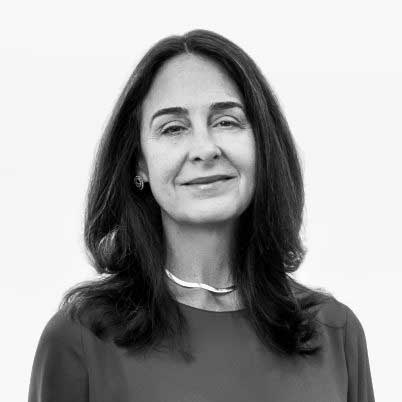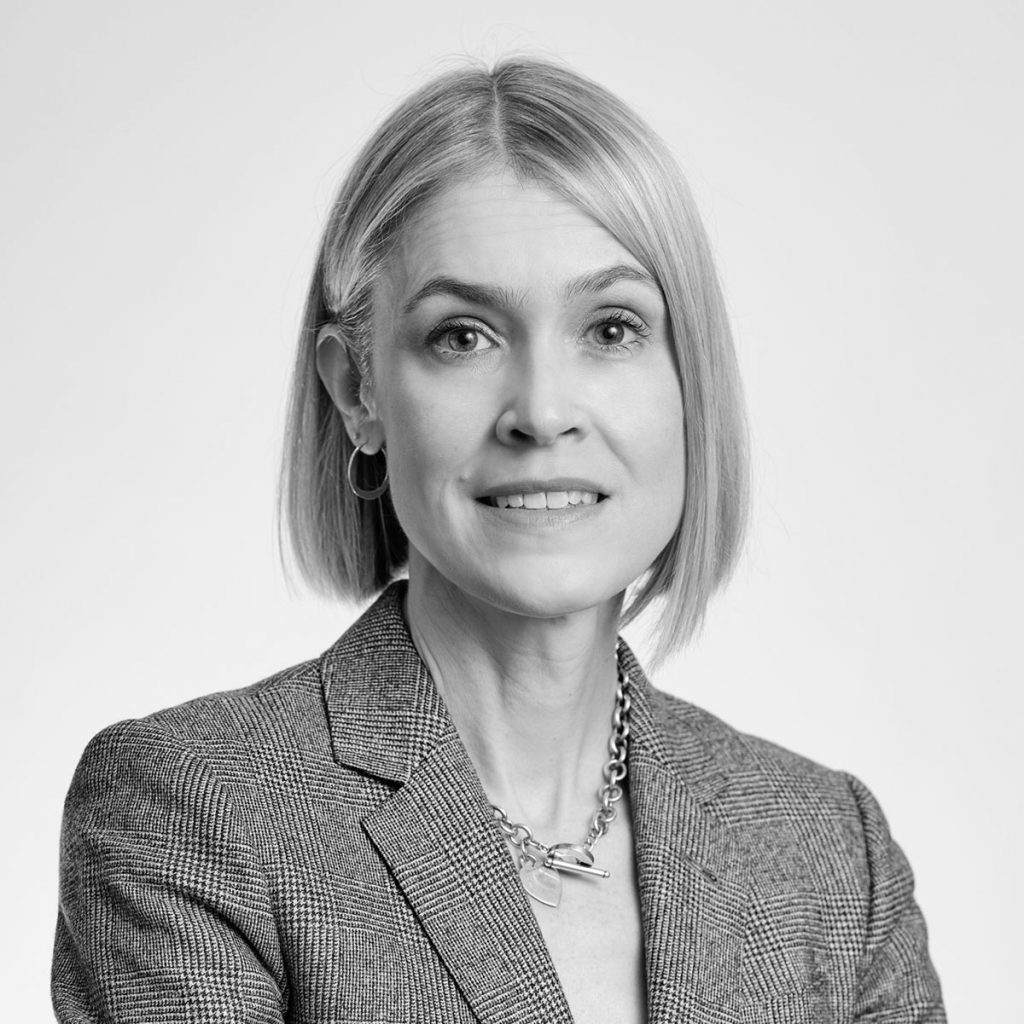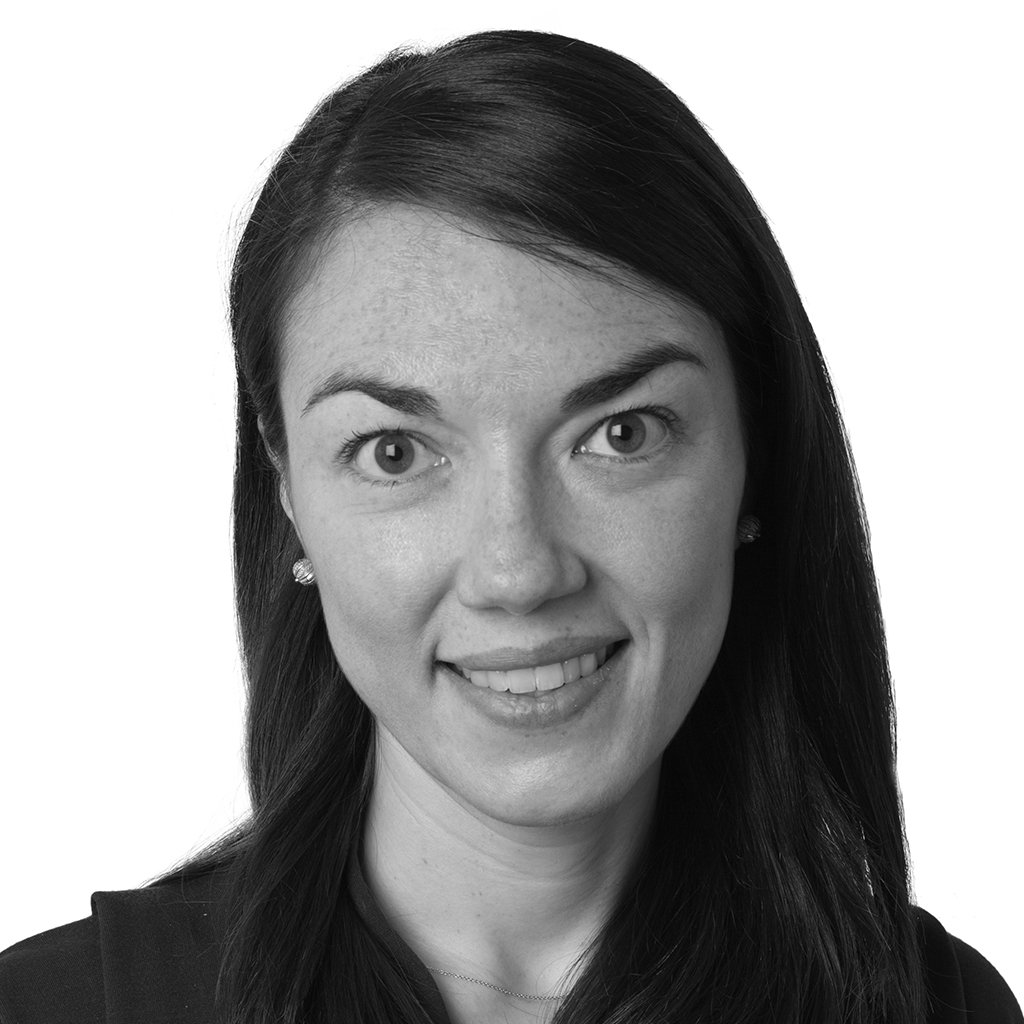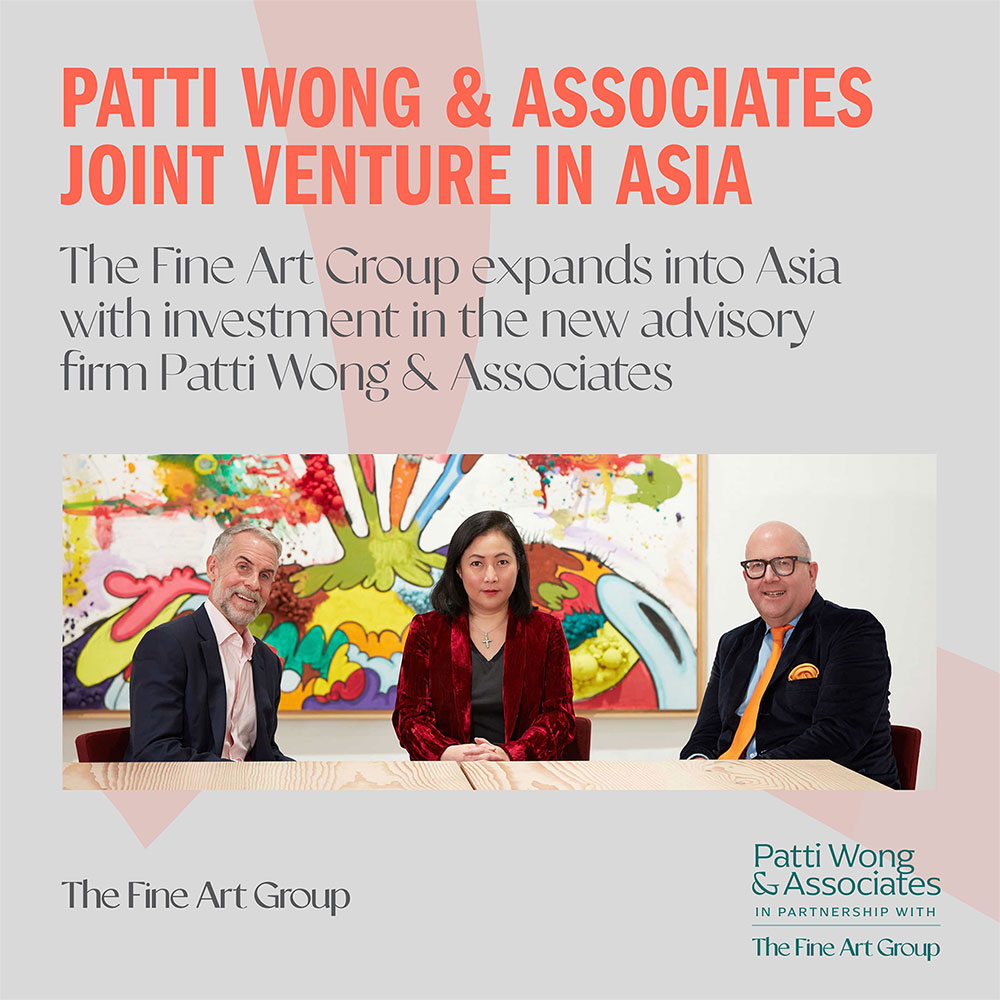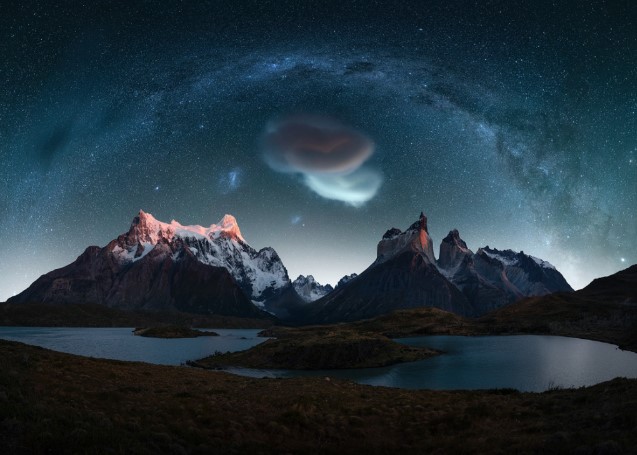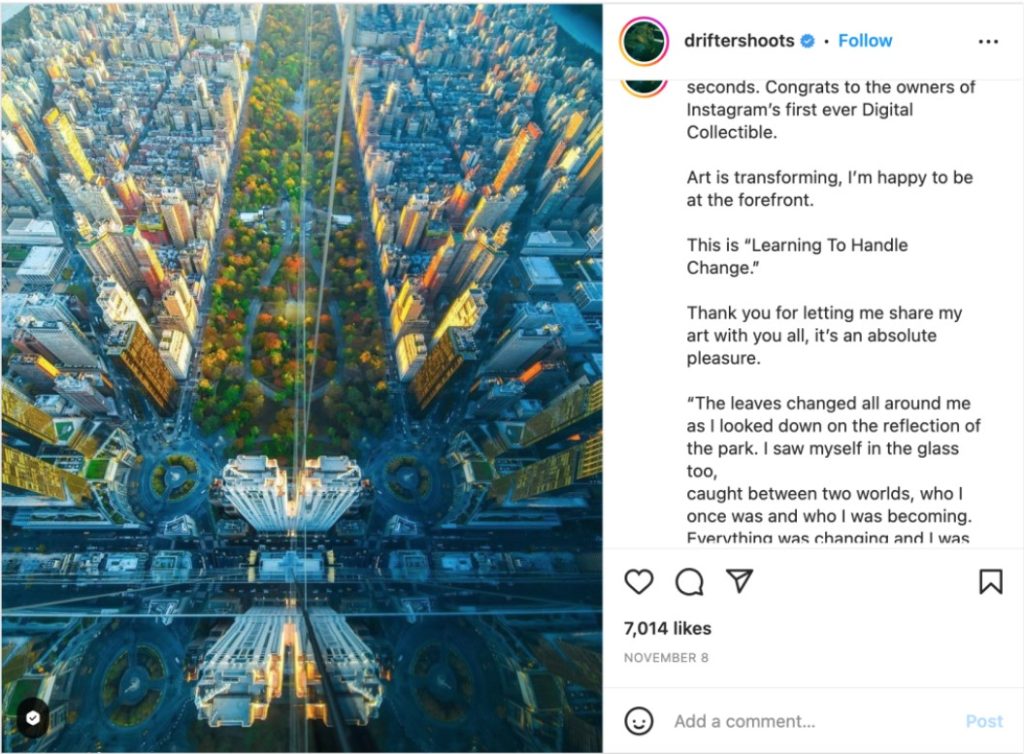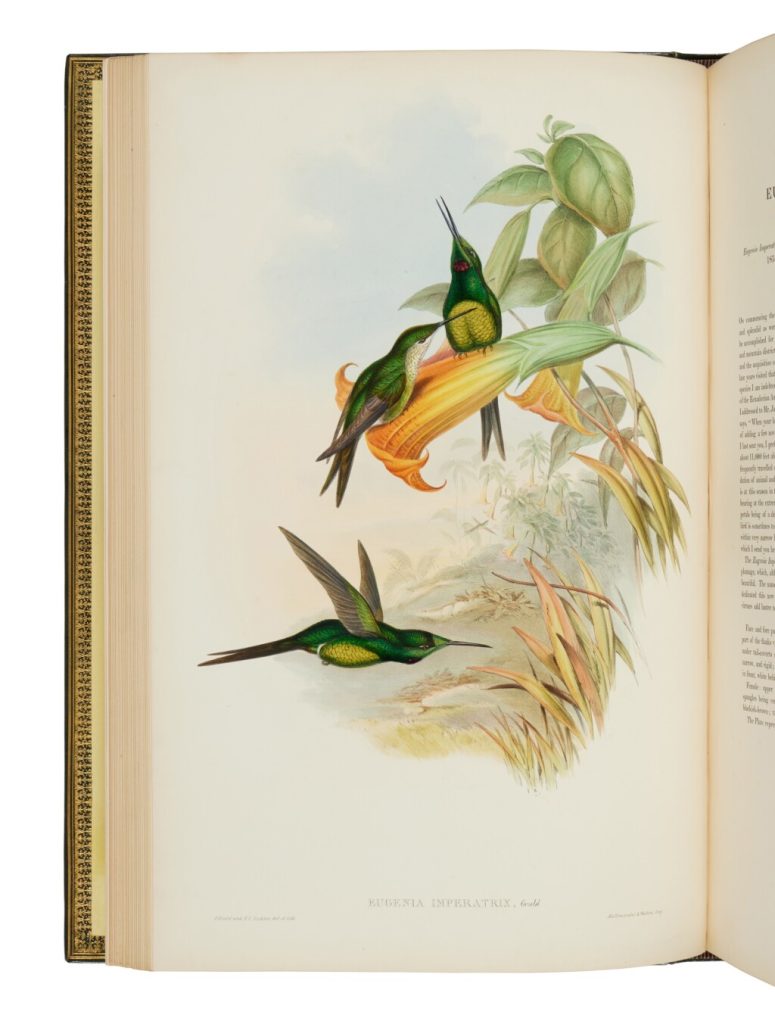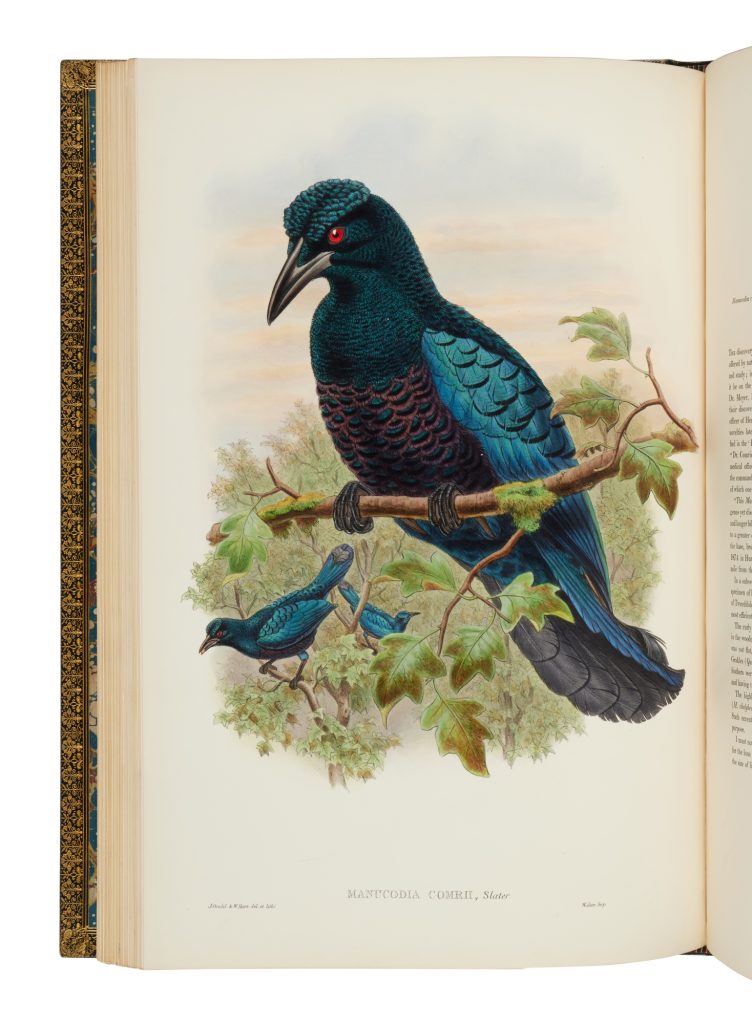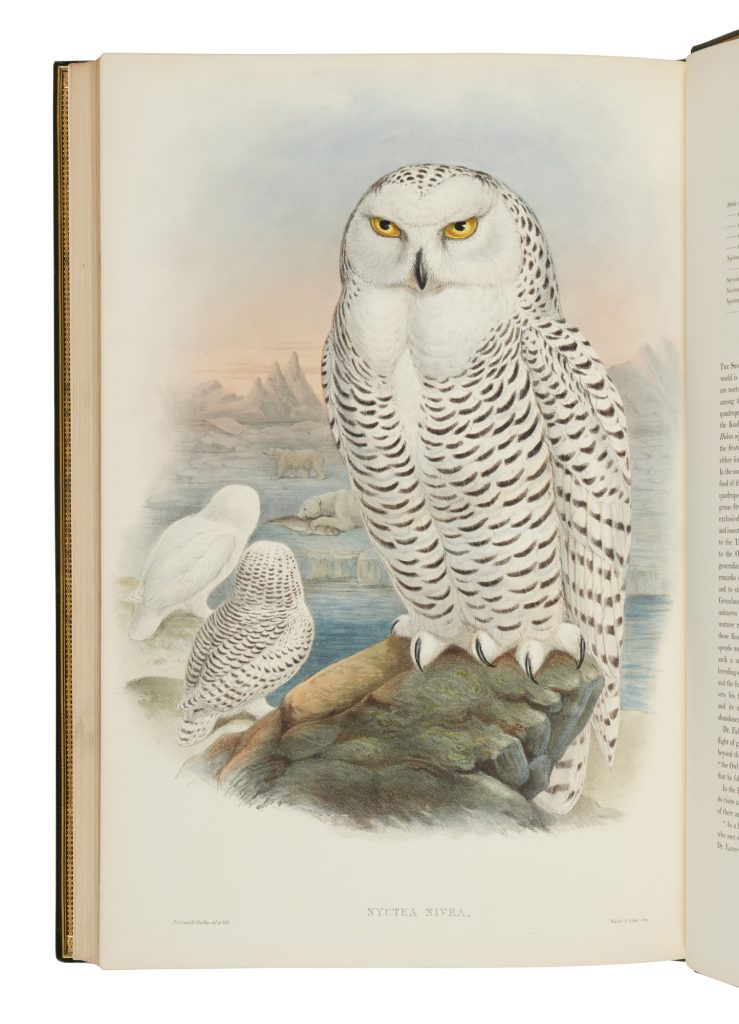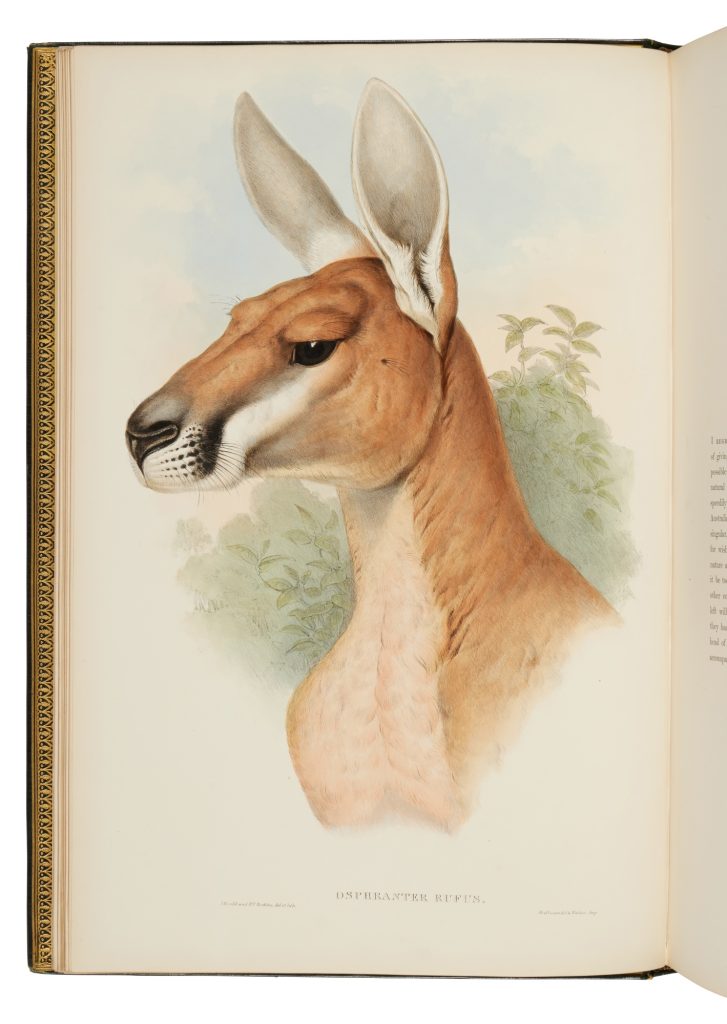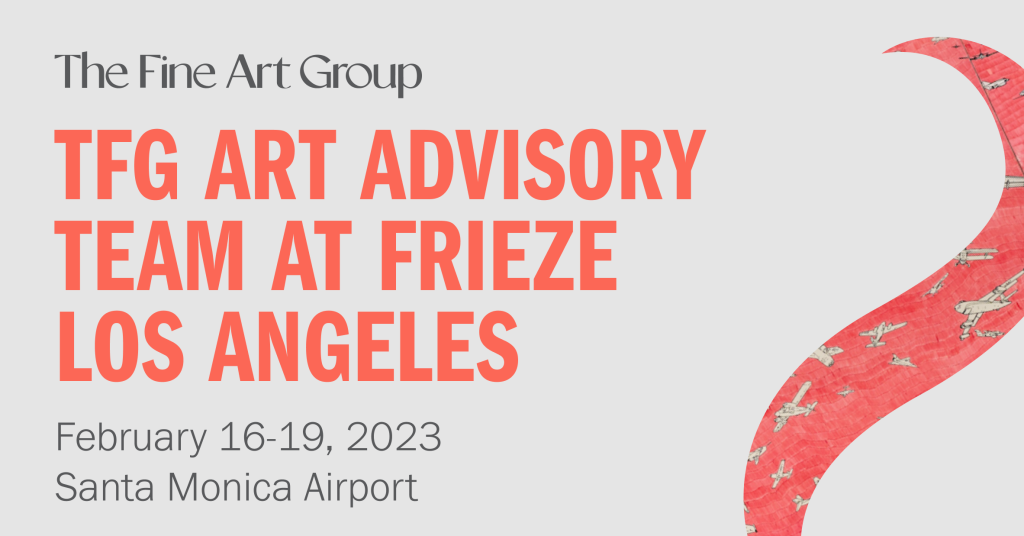
Beyond the fair, there will be numerous art events and exhibitions across Los Angeles throughout the week, with more NY galleries unveiling their new LA locations and exciting shows opening at the local institutions.
As a globally respected art advisory firm, our collective expertise ensures the very best independent advice is at our client’s disposal. We are pleased to bring that white-glove expertise to your art fair experience at Frieze Los Angeles this year.
OUR SERVICES
Offering expert Advisory across sectors, our dedicated Advisory and Sales Agency teams combine strategic insight with transparent advice to guide our clients seamlessly through the market. We always welcome the opportunity to discuss our strategies and services in depth.
FURTHER READING
Barron’s covers the announcement of Patti Wong & Associates, a new Hong Kong-based advisory, and quotes Philip Hoffman, Founder and CEO of The Fine Art Group, about the joint venture between the companies.
Click here to read the full article.
The Fine Art Group is excited to have curated the sale of The World of Hergé, Tintin’s Creator, including the original drawing for the cover of TinTin in America. Hergé’s created the first drawn version in 1942, which was then transformed into the color edition in 1946. This timeless artwork is estimated to sell between €2.2 to €3.2 million. The auction will be held on February 10th, 2023, at Artcurial.

Tintin in America
Indian ink, graphite and corrective gouache for the cover of the 1942 ‘full-page’ edition of the comic book Tintin in America. Drawing used again for the cover of the 1946 colour edition. Together with its certificate from the Hergé authentication committee.
1942
46 x 32.8 cm
Artcurial
Sale N°4235
February 10th, 2023
ESTIMATE: €2,200,000–€3,200,000
OUR SERVICES
Offering expert Advisory across sectors, our dedicated Advisory and Sales Agency teams combine strategic insight with transparent advice to guide our clients seamlessly through the market. We always welcome the opportunity to discuss our strategies and services in depth.
The Art Newspaper covers the launch of Patti Wong & Associates and its partnership with The Fine Art Group.
Click here to read the full article.
The Fine Art Group is delighted to announce an exciting expansion into Asia through a joint venture with Patti Wong and Daryl Wickstrom.
Patti Wong & Associates is a new Hong Kong based art advisory firm that will focus on the most significant collectors in the region and service their needs across multiple categories.
The Fine Art Group is pleased to assist Ms. Jane Fonda in bringing an important collection of often unsung American artists to a mainstream market. It is our shared wish that the global platform Christie’s can provide will not only draw national but international attention to the history and legacies of untrained artists of color working in the American south. Things Grow in the United States: Works from the Collection of Jane Fonda features significant works by Thornton Dial, his brother Arthur Dial and his son Thornton Dial, Jr. the collection will be sold as part of the Christie’s Outsider and Vernacular Art Auction on January 18th.
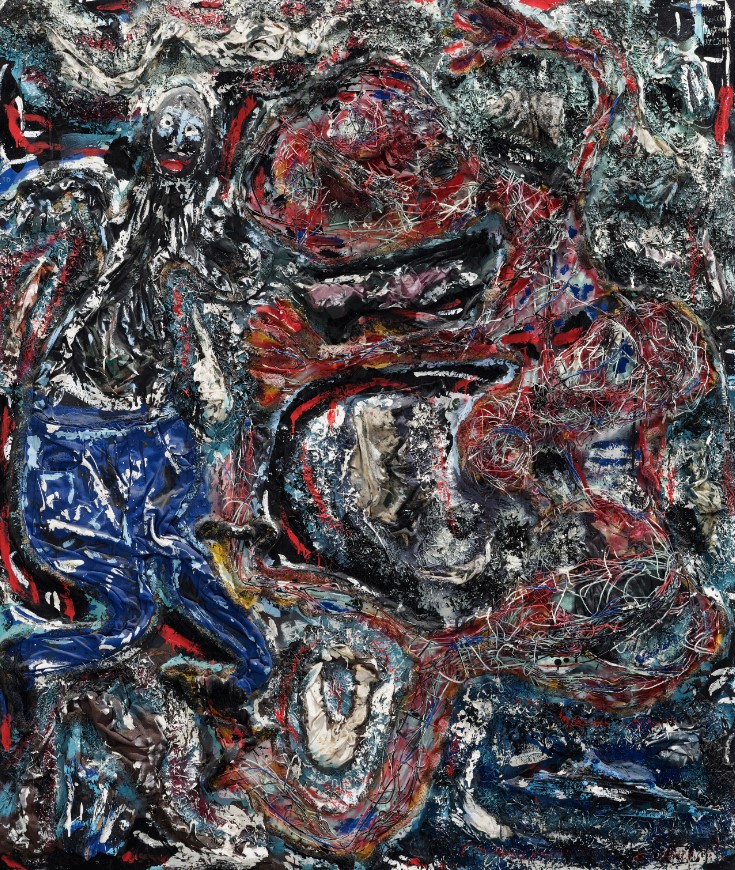
Untitled
Christie’s
January 18th, 2022
Lot 37
ESTIMATED: $50,000-$100,000
Lot 37, Untitled by Thornton Dial (1928-2016) will be sold on January 18th as part of Things Grow in the United States: Works from the Collection of Jane Fonda.
OUR SERVICES
Offering expert Advisory across sectors, our dedicated Advisory , Sales Agency, and High-Profile Client Division teams combine strategic insight with transparent advice to guide our clients seamlessly through the market. We always welcome the opportunity to discuss our strategies and services in depth.
As the year draws to a close, I must sincerely thank you all for your continued support of The Fine Art Group. I am thrilled to say that in spite of ongoing macro challenges, 2022 has been the most successful year for the firm yet.
2022 has seen our business further established in the US with a very exciting partnership with Allan Schwartzman, and the full integration of Pall Mall Art Advisors – a business that we acquired in 2021 – into the group. Our goal remains to serve collectors at every point in their collecting journey, and I hope that our Advisory service and thought-leadership have helped you to navigate an ever-changing art world.
Our Sales Agency service is a wonderful resource for our clients considering sale strategies for their treasured and varied collections, and I am delighted that we have not only expanded our expert categories, but have hired leading specialists in Vintage Cars, Watches, and Jewelry. This has also bolstered the Appraisals business which continues to provide much need support and analysis in complex markets.
I am proud to say that we have responded to the growing and bespoke needs of our clients with two exciting new initiatives launched this year: High-Profile and Philanthropy. Both are already thriving, and I look forward to sharing more exciting updates on both these divisions in the new year.
And finally, Art Finance remains one of the core pillars of the business, and a great source of liquidity for many clients. In 2022, we executed some of our largest loans and for the first time have increased our scope of accepted collateral to include some new categories.
In the art and collectibles market as a whole we have seen unbelievable results, most recently in the Paul Allen sale at Christie’s where I was delighted that we were able to acquire a few pieces for our clients.
I wish you and your family happiness, peace, and most importantly good health for the holiday season.
Looking forward to catching up in the new year with some exciting updates and even more exciting opportunities!
The Scoop #12 – December 21st, 2022
In this edition of The Scoop, we touch on the continuing FTX postmortem and how the current NFT market is weathering crypto winter.
CRYPTO MARKET
Bitcoin to USD
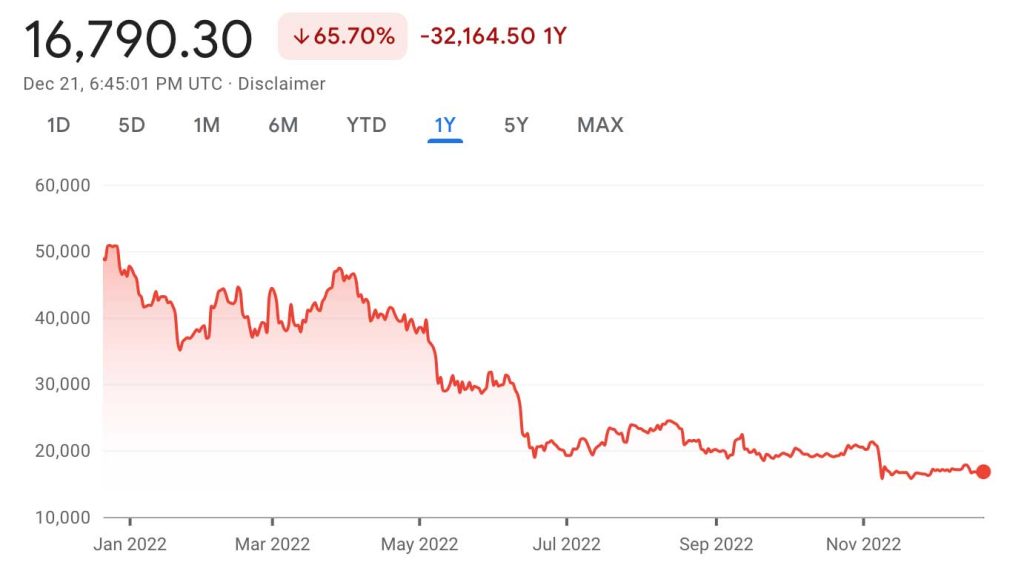
Ethereum to USD
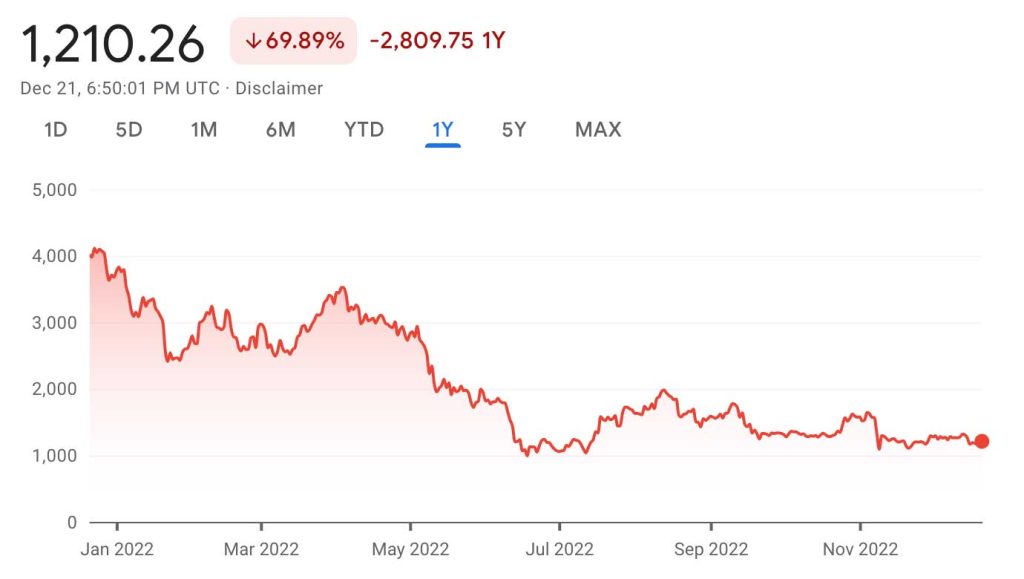
CRYPTO COMMENTARY
With the postmortem under way on the FTX meltdown, we’re seeing just how inept both Sam Bankman-Fried and Caroline Ellison really were. John Ray, the new CEO, had this to say about the previous management when testifying to Congress: “From compromised systems integrity and faulty regulatory oversight abroad, to the concentration of control in the hands of a very small group of inexperienced, unsophisticated and potentially compromised individuals, this situation is unprecedented.” He described the $8 billion in missing customer funds as old-fashioned embezzlement, adding, “never in my career have I seen such a complete failure of corporate controls and such a complete absence of trustworthy financial information as occurred here.” U.S. prosecutors have charged Sam Bankman-Fried with wire fraud and money laundering among other things, and he is currently awaiting extradition to the U.S. from the Bahamas. There are rumors that his second in command, Caroline Ellison, is cooperating with law enforcement to expose the depth and details of this fraudulent scheme.
It’s important to remember that FTX was a piece of infrastructure, like a stock exchange or bank, and not representative of the blockchains and cryptocurrencies that were sold on it. Bitcoin and Ethereum remain technologically sound and continue to run without issue. Just like we’ve seen in the past with traditional finance, bad actors can cause detrimental damage to any market they are part of, and this is a serious setback to the entire crypto space. There are some pundits who are using the FTX saga to cast doubt on blockchain, but that’s like being mad at the U.S. dollar when Bernie Madoff got exposed which doesn’t make sense. Bankman-Fried is likely headed to jail, but crypto isn’t going anywhere.
WHAT’S THE BUZZ
One thing that has become clear is that securing your crypto will be very important moving forward. Private keys are the only way to guarantee ownership.
PRIVATE KEYS
- A private key is a secure code that enables holders to make cryptocurrency transactions and prove ownership of their holdings.
- Bitcoin keys specifically feature a 256-bit string displayed as a combination of letters and numbers.
- The best way to self-custody crypto is to keep it in cold storage, disconnected from the network on a Ledger/Ballet device.
- If you lose or forget your private keys, there is no way to recreate or reset them.
- “Not your keys, not your crypto”
NFT BLUE-CHIP COLLECTIONS
Top 5 NFT Collectibles Collections
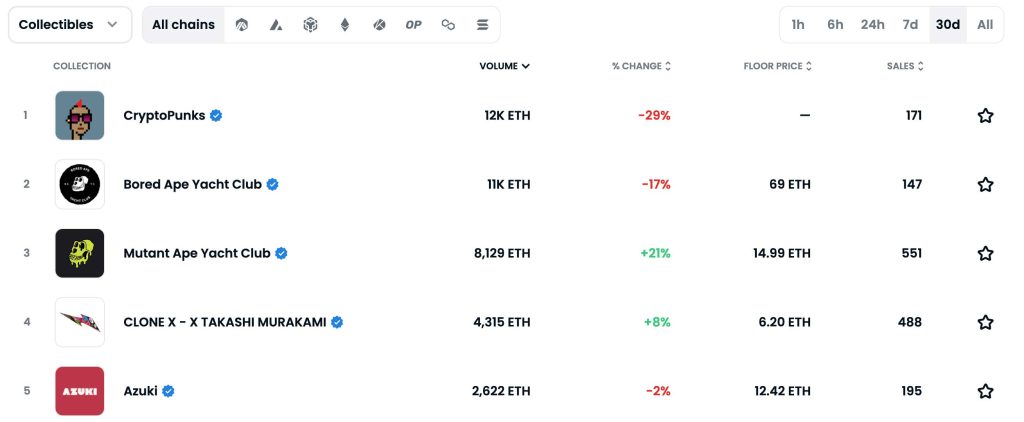
Top 5 NFT Photography Collections
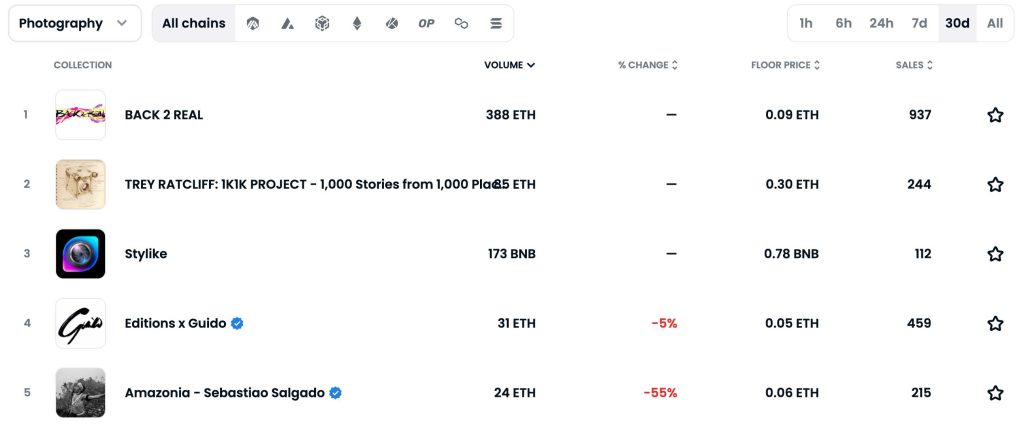
NFT COMMENTARY
The NFT market is still crawling along as the bear market continues. We’re seeing the top collections maintain their floor prices which is an encouraging sign, but their underlying value is still fluctuating with the price of Ethereum. The one thing that has dramatically slowed down since the bull market is volume. Overall, we’re seeing fewer transactions and less money changing hands and that has been the status quo since early summer.
The most recent sale from Christie’s took place during Art Basel in Miami with a collection titled Next Wave: The Miami Edit. It was a well-rounded offering with pieces from different genres across a wide range of price points. The auction finished with a 93% sell through rate after selling 14 of 15 pieces; however, the majority did not meet their lower price expectations. It seems as though even high-profile shows are not immune to the cold of crypto winter.
In a more promising sign, Instagram has officially launched its NFT offering to select artists who have started minting and selling pieces directly on the social media platform. The first few pieces that have been offered have sold out in minutes with artists and creators being the main beneficiary of that income, unlocking a new way to monetize their work. With the numbers of users Instagram (and Meta) have, this is a large play for wider adoption. If this business model works we could see more people that haven’t had exposure to NFTs yet start to get involved. One of the main things driving the sales is affordability; the pieces that have been offered so far have been around $100 which is certainly less than most marketplaces. Onboarding new participants seems to be priority No. 1 at this point.
NFT ARTIST SPOTLIGHT
Gary Vaynerchuk
While Gary Vaynerchuk isn’t the best artist, just look at his VeeFriends collection and you’ll find that he is one of the loudest voices in the space supporting the technology behind NFTs. When he first launched VeeFriends, many were less than enthused about the art. However, Gary wasn’t in it for the art; he was in it for the utility.
Gary was one of the first to add real world value to digital assets by linking attendance to his annual business conference to the ownership of his NFT collection. The conference, which usually costs several thousand dollars to attend, was free for the first three years to anyone that held one of his NFTs. When it came time for the conference last year, Gary’s team airdropped a separate token that represented a ticket to all his holders. They then had the decision to either attend, or sell that token to someone who wanted to go.
To take it a step further, after releasing VeeFriends Series 2 he launched a card game to match the NFTs. Think trading cards, Pokemon for example, with each character having a different skill set. Again, he was building a real-life experience for those who held his digital assets. His larger ambition is to create a whole brand around the VeeFriends IP including merch, cartoons and a large trading card ecosystem which will bring everything back to the NFTs he originally created. The two things that are valuable in NFTs are history and utility, and he is a master of utility.
NFT & CRYPTO NEWS
- Sam Bankman-Fried extradited to US, seeking bail deal
- Donald Trump’s NFT Collection loses steam
- Driftershoots sells out in 10 seconds as Instagram’s first NFT
- Crypto’s regulatory fate will be decided in the year ahead
- Binance’s books are a black box
- Magic Eden launches protocol to enforce creator royalties
- Bitcoin miner Coin Scientific files for bankruptcy
- Crypto Winter… or Ice Age?
READ PAST ISSUES OF THE SCOOP
- The Scoop #11 – November 22nd, 2022
- The Scoop #10 – November 2nd, 2022
- The Scoop #9 – October 15th, 2022
Disclaimer
Information in this report is compiled from a number of sources; The Fine Art Group does not make any representation or warranty, express or implied, as to its accuracy or completeness. The Fine Art Group shall not be liable for any errors or inaccuracies in this report or for any actions taken in reliance on information or opinion contained in this report. The Fine Art Group are under no obligation to update or keep current the information provided herein. Information in this report is provided solely for information and marketing purposes and is not to be construed as investment advice or a personal recommendation, nor as legal, tax, regulatory, accounting or any other specialist technical advice. Capital is at risk when buying or selling the types of assets discussed in the report, and any decision to do so is solely at the risk of the buyer or seller. Prior performance is not indicative of future results. Neither The Fine Art Group nor any of its directors, officers, employees, or agents accepts any liability for any loss or damage arising out of the use of all or any part of this document or reliance upon any information contained herein.
The report contains hyperlinks or references to third-party advertising and websites other than The Fine Art Group website. Any such hyperlinks or references are provided for your convenience only. We have no control over third-party advertising or websites and accept no legal responsibility for any content, material or information contained in them. The display of any hyperlink and reference to any third-party advertising or website does not mean that we endorse that third-party’s website, products, or services. Your use of a third-party site may be governed by the terms and conditions of that third-party site and is at your own risk.
The Fine Art Group advises institutions and non-profits to perform due diligence around deaccessions in order to meet their individual missions.
We are proud to have advised the Carnegie Museum of Natural History in the deaccession and sale strategy of a collection of ornithological rare books, including 19th century illustrated books by John Gould. The books are being offered through Sotheby’s Fine Books and Manuscripts Sale ending on December 16th, 2022.
For more information on how to register, please visit Sotheby’s by clicking here.
John Gould (British, 1804-1881) was a naturalist and ornithologist that documented exotic birds and other animals across the globe through expertly rendered drawings and watercolors. Gould, with a background in horticulture and taxidermy, had a deep understanding of the natural world and his vast body of work reflects that.
These rare books will be sold to fund the care of the museum’s collection of over 22 million specimens and important objects.
FURTHER READING
OUR SERVICES
Offering expert Advisory across sectors, our dedicated Advisory and Sales Agency teams combine strategic insight with transparent advice to guide our clients seamlessly through the market. We always welcome the opportunity to discuss our strategies and services in depth.
Written by Henry Little, Director, Art Advisory; Charlie Wood, Associate Director, Art Advisory; Grace England, Researcher
INTRODUCTION
The Asking Price #2 – December 9th, 2022
The Fine Art Group is pleased to present The Asking Price, a new monthly newsletter focused on the global art market.
Drawing upon world leading expertise, The Asking Price offers regular insight into the complex world of art dealers, art fairs and auction houses.
For our second edition:
- Charlie Wood provides the key conclusions from the mammoth round of New York auctions in November, including the billion dollar sale of the Paul Allen Collection (5 minute read)
- Grace England explores the history of Miami’s vibrant contemporary art scene following Art Basel Miami’s successful 20th edition (7 minute read)
NOVEMBER AUCTIONS IN REVIEW
BY CHARLIE WOOD (5 MINUTE READ)
Due to the behemoth Paul Allen collection coming to market, the New York November Marquee sales occurred over two weeks this year. Total evening auction sales of Impressionist, Modern, Post-War and Contemporary art (with some Old Masters) reached $2.38 billion (hammer price) against the total pre-sale estimate of $2.07 – $2.59 billion. Exceeding expectation, this is the highest total on record and likely to catapult 2022’s total auction turnover into its highest ever result.
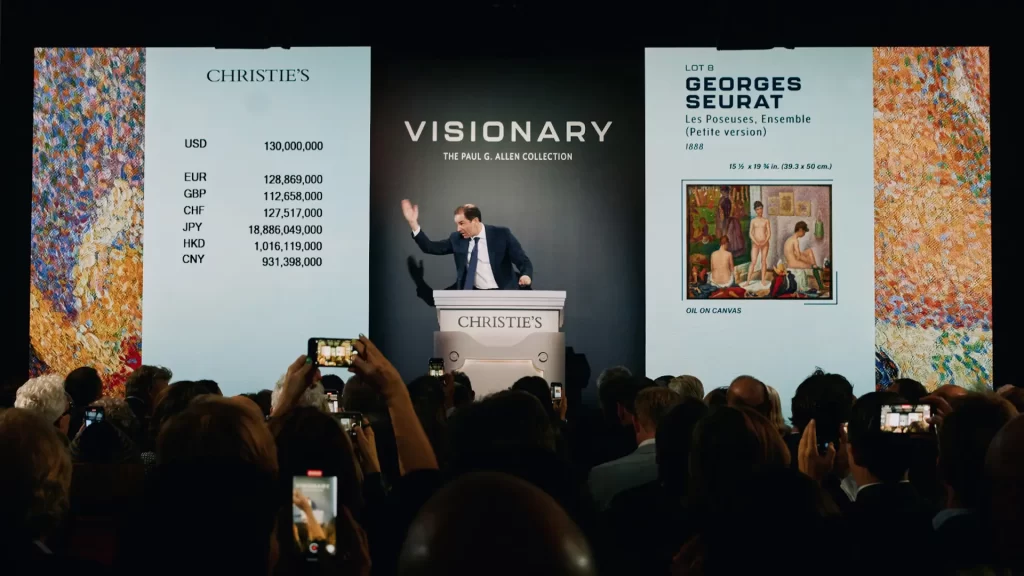
THE PAUL ALLEN COLLECTION
The first week began with the evening sale (Part I) of the Paul Allen Collection, which resulted in a hammer total of $1.3 billion ($1.6 billion with premium), surpassing the presale estimate of $1.06 – $1.23 billion, with all proceeds going to undisclosed charities. There has been much discussion about the lack of bidding wars or drama during the sale. However, much of this is due to the high estimates that accompanied the works, estimates that no doubt were required to win the sale from competitors. These prices took the wind out of the sale room activity but should not take away from the success of the auction and the tremendous results.
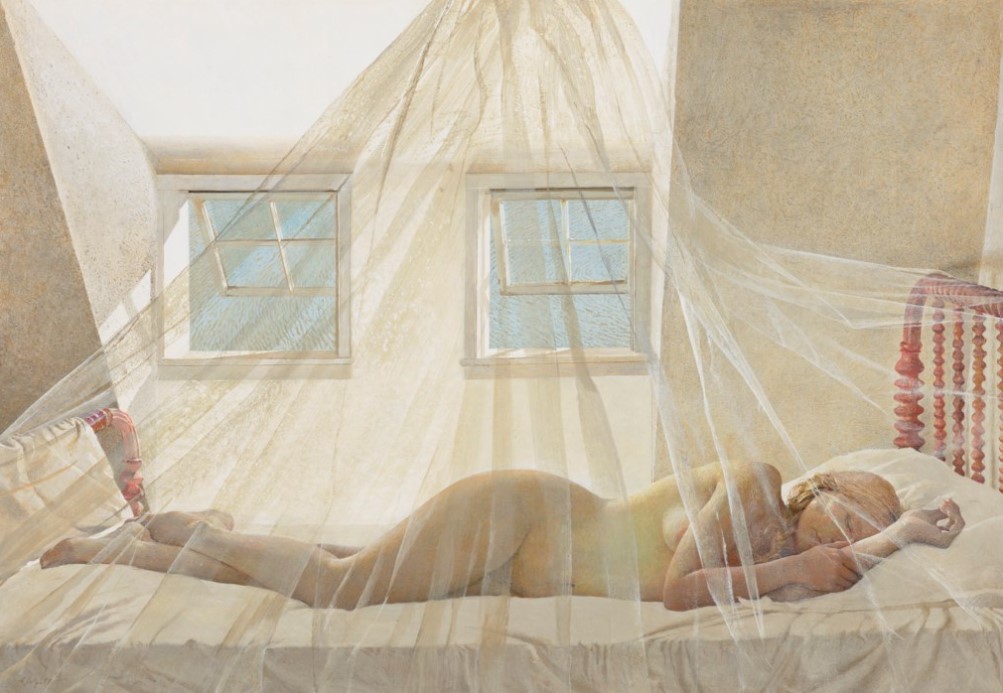
There was some spirited bidding on lots including Andrew Wyeth’s Day Dream (1980) which sold for a new record of $23.3 million (premium), more than seven times its high estimate, and Georgia O’Keeffe’s White Rose with Larkspur No. I (1927) which sold for $26.7 million (premium) above its $8 million high estimate. The whole sale set 20 new records for artists including Van Gogh, Klimt, Seurat, Jasper Johns and Lucien Freud.
All but one of the works sold (a Magritte was withdrawn as the sale began). Five lots sold for more than $100 million (premium), 15 others sold for over $20 million (premium) each. Of the 60 works offered, 39 were backed by third-party guarantees, but few of these works sold to their guarantors, a further demonstration of the wider demand for the material and pushing the results of the sale.
NEW YORK EVENING SALES
Despite Christie’s coming in with the highest total of the week due to Paul Allen, during the second week of sales Sotheby’s evening auctions appeared to have performed better than Christie’s overall. However, all the houses struggled, with several big withdrawals and reserve adjustments, meaning most sale totals were below expectations.
Sotheby’s began the second week with a single-owner sale of works from the collection of the late Whitney Museum president David Solinger. The 100% sold auction, remarkably with no guarantees, hammered at $116.4 million, towards the top end of the presale estimate of $86.7 – $118 million. Nearly half (11 out of 23) sold for hammer prices above their high estimates, with a new record for a de Kooning work on paper. Aside from this and Sotheby’s Now sale (also 100% sold), the remaining evening sales underperformed. Phillips’ sales total was $2.8 million below its anticipated total, Sotheby’s Modern and Contemporary sales together hammered $31 million below their pre-sale estimates. Christie’s 20th and 21st Century evening sales combined were $97.8 million below their expected hammer totals, their unsold $35 million de Kooning painting a large contributing factor.
Despite these totals, the average sell-through rate for these auctions was a very successful 94%. This is the result of tight sale management, lowering reserves and securing last minute third-party guarantees at conservative levels. Nevertheless, this confirms that most of these works did find buyers despite the market having spent $1.6 billion the week before. In addition, over $200 million was spent across all houses in the day sales, with an average sell-through rate of 84%. These sales, a high revenue stream area, with the houses not typically having to give away significant commercial terms compared to evening sale lots, are a good indicator of the stability of the market. As per past sale trends, the Post-War and Contemporary day sales continue to outperform the Impressionist and Modern category.
Despite this category remaining strongest, the market for some of the young artists in the newly coined ‘Ultra-Contemporary’ category, saw less frenzied demand than previous sale cycles, a development that had gently begun in the October London sales. Works by Maria Berrio, Lucy Bull and Salman Toor did all vastly exceed their estimates and saw lively bidding. By contrast, all but one of the offered Anna Weyant paintings sold for below her primary price levels of $600,000. Only one of the two Christina Quarles paintings hammered at the primary price level of about $1.2 million, the second painting hammering just above the low. Works by Amoako Boafo, Nicolas Party and Avery Singer also hammered below their low estimates. Yet the prices for many of these artists remain high for their age and career, more expensive than A+ works on paper (and even some paintings) by Impressionist and Modern Masters.
Moreover, these results should be viewed in the context of rising estimates and buyers becoming more selective as more works come to market. The differing results for the two Quarles pieces, for example, are to some extent reflective of the differing quality of the works. The successful outcome of the Sotheby’s Now sale that offers works from this category, hammering at $37.5 million against the low estimate of $32.4 million, also shows that this market segment still has considerable strength, even without the froth and unsustainable market heat.
The overall results reflect that the Paul Allen sale (and on a smaller scale, the Solinger sale) were a huge success, but the auctions that followed were markedly less so. This has led to some further suggestion that more challenging conditions may lie ahead for the art market. However, this viewpoint does not consider the wider picture, with $1.6 billion spent the week before, the buying power of collectors was perhaps waning by week two. This was a significant amount of material to ask the market to absorb. Moreover, the general totals and sell-through rates continue to display the resilience of the art market, against significant geopolitical disorder, rising inflation and fears of a recession that is currently affecting other markets to a greater degree.
These results also further demonstrate the importance of these single-owner collections in boosting overall volume and sales totals, as well as setting new records. More collections are anticipated to come to market in the coming years and these will continue to add vitality to a market that thrives off fresh material.
ART BASEL MIAMI BEACH: 20 YEARS
BY GRACE ENGLAND (7 MINUTE READ)
THE ‘MAGIC CITY’
This year marks 20 years since Art Basel came to the sunny shores of Miami, Florida, which has long been a haven for the wealthy to spend their winters and retire in a more forgiving climate. In the last two decades, however, the city’s cultural credentials have grown steadily. A 2018 study by UBS found Miami to be the second richest city in the U.S. and the third richest city globally when it comes to purchasing power. Today, the “Magic City” is home to dozens of art fairs, institutions, public art programs and private museums, including the Rubell, Margulies and de La Cruz collections. Each of these focuses primarily on American art and have vocally championed contemporary and emerging artists, opening their collections to the public in 1993, 1999 and 2009, respectively.
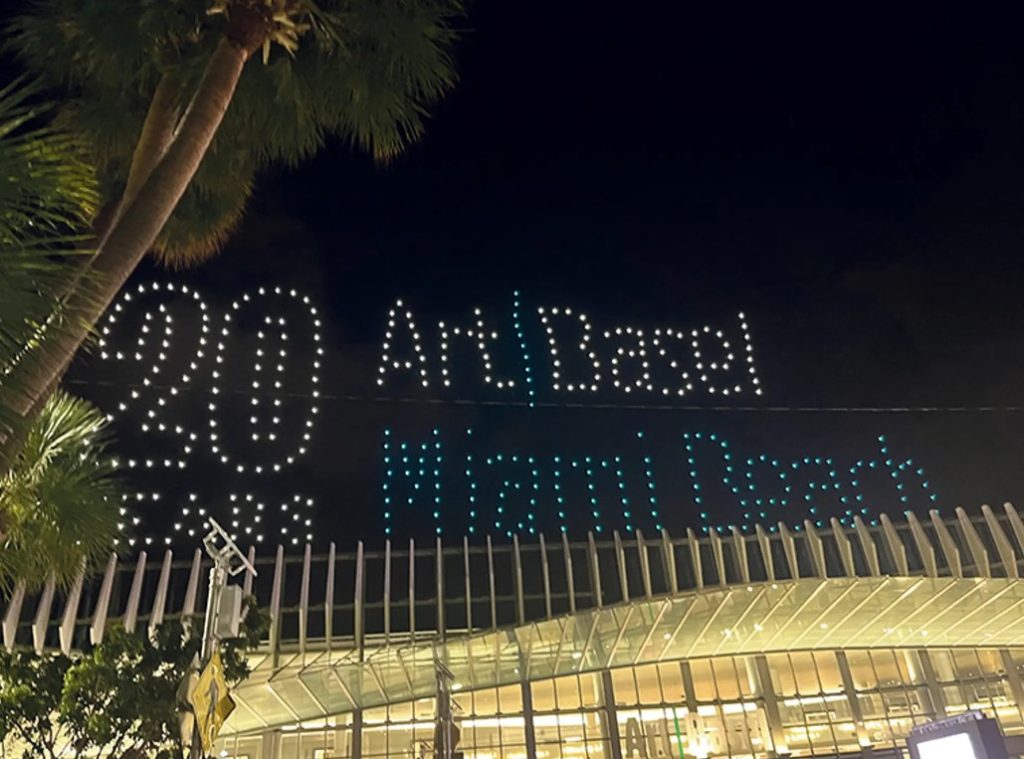
The correlation between the growth of private collections and the founding of public museums is strong, with the Museum of Contemporary Art in North Miami and the Institute of Contemporary Arts also opening in the mid-1990s. Above all, Art Basel is credited for the major expansion of the city’s art scene. Aside from a well-established collector base, the city’s location affords a dialogue with South American artists, galleries and collectors, as well as an appealingly warm climate in the traditionally off-season month of December.
THE BIRTH OF ART BASEL MIAMI
The arrival of Art Basel in Miami, and the subsequent expansion of its art scene, is largely attributed to two entities: the Miami-based collectors Norman and Irma Braman, and their long-term advisor and art world powerhouse, Jeffrey Deitch. Some of the earliest U.S. visitors to Art Basel in the 1980s, the Bramans introduced Deitch (who had first led them to Basel) to more Miami-based collectors who quickly turned into clients. This would connect Deitch to individuals who became pivotal in the creation of Art Basel Miami, namely Craig Robins (developer of the Miami Design District).
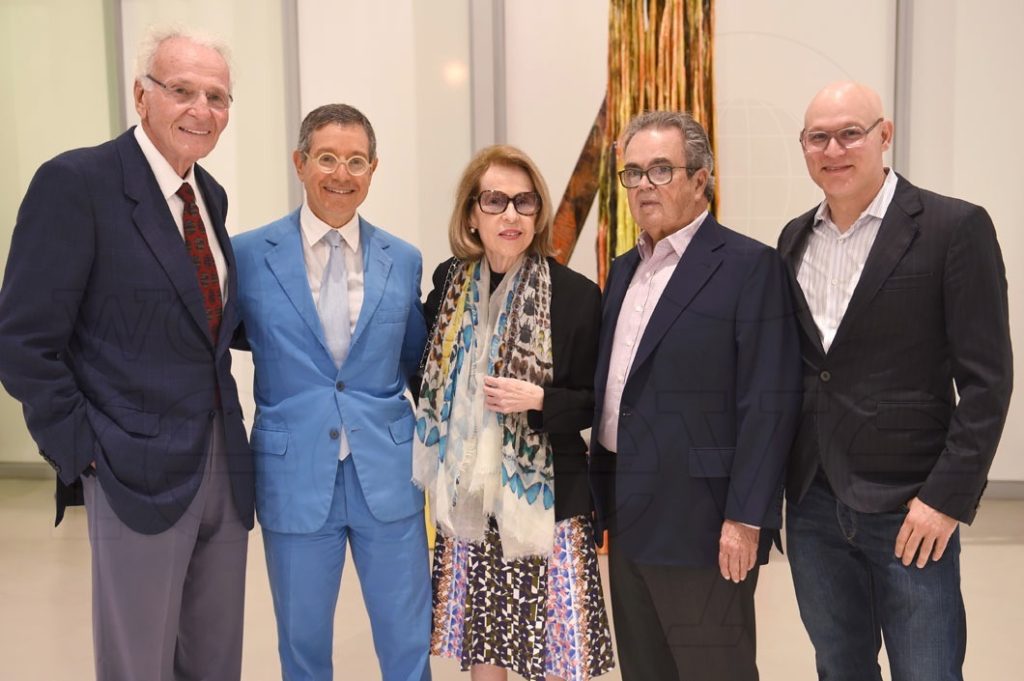
The reported “top buyer” at the time in Basel, Deitch developed close links with the fair’s chief, Lorenzo Rudolf, and director of communications, Sam Keller. When the fair looked to the U.S. for a new location, the Bramans proposed Miami Beach. The main selling points were the wealthy demographic with great buyer potential, the reasonable pre-holiday hotel rates before the Christmas festive season, and the excellent climate and glamorous lifestyle which would attract party-loving fairgoers.
With an initial delay due to 9/11, the fair officially opened in December 2002. From the start, the Miami Design District played a distinct role. With Craig Robins having begun to acquire property in the neighborhood during the 1990s, it has since become a community of designer shops, high-end restaurants, museums and fair spaces. Special exhibitions by the fair have taken place there almost every year since its opening, with the Institute of Contemporary Art and de La Cruz Collection both located within the Design District.
To this day, Deitch remains an integral partner in the fair’s activities. Since 2015 he has frequently collaborated with Gagosian on a satellite show during the fair’s run, with the latest show this year, 100 Years, featuring the likes of Theaster Gates, Damien Hirst and Rachel Whitehead, and taking place at the Buick Building in the Design District.
A FOCUS ON THE RUBELLS
Having begun collecting in New York in the mid-1960s after their marriage, Mera and Don Rubells’ collecting habits expanded after the death of Don Rubell’s brother, the infamous owner of Studio 54 nightclub, Steve Rubell. His significant inheritance allowed them to develop their collecting habits and invest in a number of hotels in South Florida. This began their historical relationship with Miami with the couple moving to the city from New York in 1998. Collecting emerging contemporary artists from the beginning (their initial budget for art buying in the mid-1960s was $25 a week), their collection now holds works by over 1,000 artists, including Jean-Michel Basquiat, Marlene Dumas, Oscar Murillo, Cindy Sherman and Kara Walker.
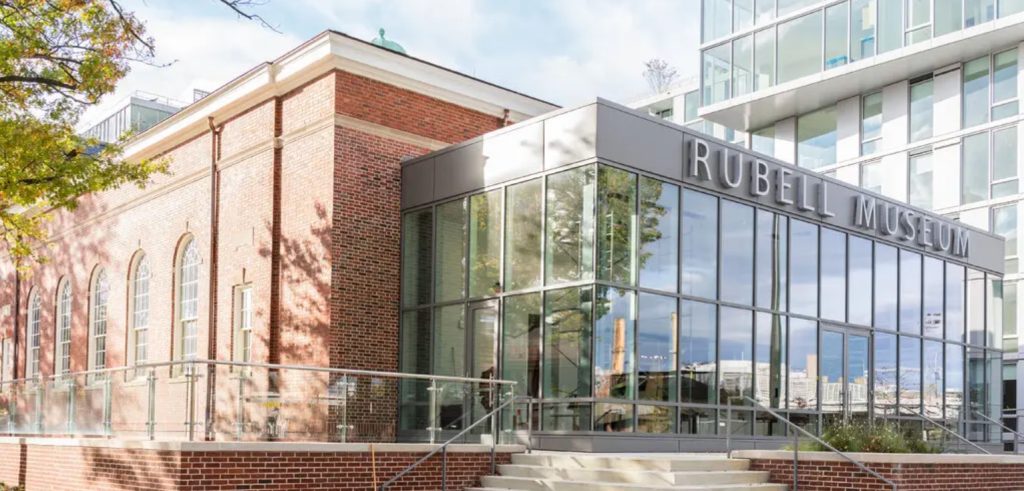
In 1993, they opened the Rubell Family Collection in the Wynwood neighborhood of Miami. An anomaly in the area at the time, they would kickstart a new trend for private collections and art-focused businesses and galleries opening in South Florida over the next decade. As of 2019, the collection is housed in the Allapattah neighborhood in the re-named Rubell Museum. Reportedly owning over 7,400 works, the Rubells also announced the opening of a second museum location in Washington, D.C., in October 2022. An important development, it demonstrates how far the Rubell influence has traveled outside of the West Coast to become a recognized institutional body.
OUTSIDE OF ART BASEL
As the longstanding mainstay of Miami’s contemporary art ecology, Art Basel is now surrounded by a plethora of other art and design fairs across Fort Lauderdale and Miami Beach during this pivotal week in December. Design Miami launched in 2005 under Craig Robins as a way to both incorporate design galleries into the fair week and further develop the Design District. Others have joined too, including NADA (New Art Dealers Alliance) in 2002, and Untitled in 2012, both focusing on emerging art. Not forgetting of course Art Miami, Miami’s longest running anchor fair which preceded Basel, having launched in 1989. Originally following Art Basel Miami in January, it now runs in parallel and comprises a wider empire, incorporating other fairs in Miami and New York such as CONTEXT, Aqua Art Miami, Art Wynwood, Palm Beach Modern + Contemporary, and Art New York.
Miami art week has become known for a more ebullient atmosphere, possibly the consequence of its more informal appeal compared to the original Art Basel. This took an early form in performance art and began under Jeffrey Deitch. Deitch Projects first launched its performance program in the house (and pool) of collector George Lindemann at the first Art Basel Miami in 2002. Deitch continued with this performance program (his last in 2014 included pop singer Miley Cyrus) until he switched to an exhibition collaboration with Gagosian in 2015. The performance strain of Miami art week has, however, continued to thrive. In 2022, South African artist William Kentridge, fresh from a concurrent career retrospective at the Royal Academy of Arts in London, performed a work at the Adrienne Arsht Center for the Performing Arts.
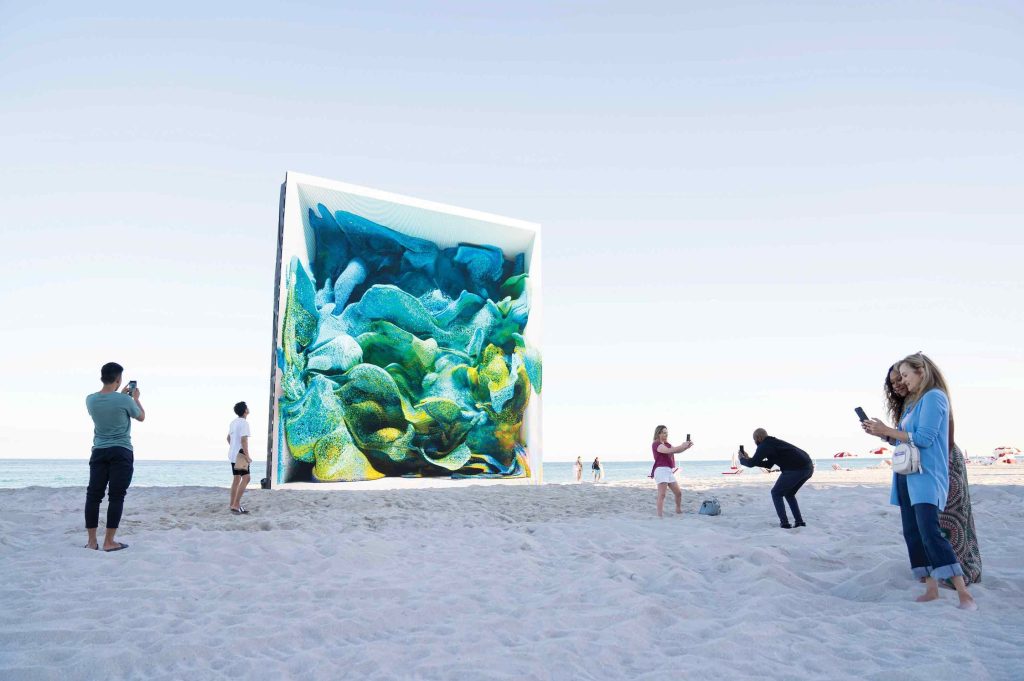
In 2021, with the arrival of NFTs and huge growth of the digital art scene, Miami was quick to participate in the market frenzy. Art Basel Miami partnered with blockchain Tezos to invite guests to mint their own NFT, NFT superstar Beeple was spotted making the rounds at the fair, and NFT platforms and NFT selling galleries such as SuperRare, Pace Verso and Nagel Draxler were granted booths. A momentous moment, with Art Basel Miami arguably the first mainstream fair to fully incorporate and promote NFTs, it took advantage of the recent emigration of many fintech companies to low-tax South Florida, as well as introducing Miami’s wealthy collectors to another sector of art collecting.
While the NFT world has suffered considerable setbacks in 2022 with the crash of the crypto market, inflation and general market distress, tech-enabled art platforms continue to expand in Miami, with a key example being Aorist, a climate-conscious NFT marketplace launched during 2021’s Miami art week with an immersive, aquatic-themed installation by Refik Anadol.
THE ULTIMATE SUNSHINE APPEAL
Miami art week has become a vital keystone event in the art market calendar. Art Basel, and the subsequent growth of Miami’s contemporary art scene, has resulted in a collector hub, fueled by the establishment of native commercial galleries such as David Castillo, Fredric Snitzer and Emerson Dorsh.
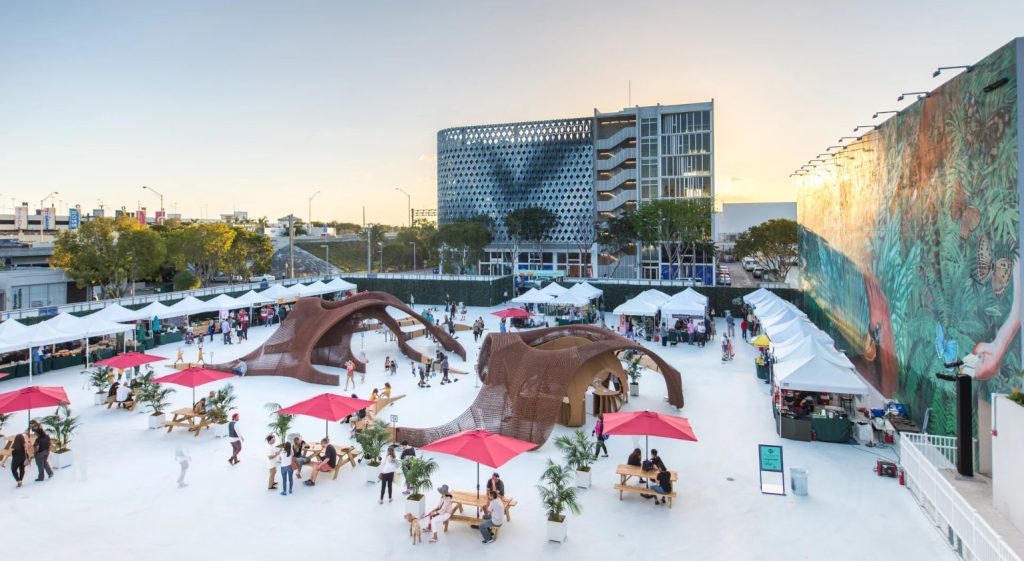
Attractive from the beginning for its location, climate and wealthy demographic, since inception Art Basel Miami has become the most celebrity laden of the annual fairs (competing only with Frieze LA). Leonardo DiCaprio, Sylvester Stallone and Barbara Streisand are all big-time collectors and regular visitors. It is certainly the most carnivalesque of the Basel fairs. The artwork on offer, extravagant events and overall atmosphere are far less formal than traditional art fairs – a combination, perhaps, of pre-Christmas anticipation, local wealth and sunshine. At a time of year when the art world fades into hibernation for the holiday season, and art market centres London and New York cool, literally and figuratively, Miami offers warmth and energy to close out the year.
EXHIBITIONS NOT TO MISS
LONDON
Barbican – Carolee Schneemann, Body Politics
Barbican Centre, Silk Street, London, EC2Y 8DS
Until 8th January 2023
Lisson Gallery – Richard Long, Drinking the Rivers of Dartmoor
27 Bell Street, London, NW1 5BY
Until 21st January 2023
Ben Hunter – Rodin, Moore, Whiteread, Keith-Roach
44 Duke Street St James’, London SW1Y 6DD
Until 27th January 2023
Gagosian – Lucian Freud, Francis Bacon, Frank Auerbach, Michael Andrews
20 Grosvenor Hill, London, W1K 3QD
Until 28th January 2023
Tate Britain – Lynette Yiadom-Boakye, Fly in League with the Night
Millbank, London, SW1P 4RG
Until 26th February 2023
NEW YORK
Mnuchin Gallery – Lynne Drexler, The First Decade
45 East 78 Street, New York, NY 10075
Until 17th December 2022
Gagosian – Anselm Kiefer, Exodus
555 West 24th Street, New York, NY 10011
Until 23rd December 2022
Green Naftali – Jacqueline Humphries
508 West 26th Street, New York, NY 10001
Until 14th January 2023
Mendes Wood DM – Antonio Obá
47 Walker Street, New York, NY 10013
Until 21st January 2023
Guggenheim – Alex Katz, Gathering
1071 Fifth Avenue, New York, NY 10128
Until 20th February 2023
TOP ART MARKET STORIES THIS MONTH
- Art Basel in Miami Beach sales report: Dealers Brace for Gloomier Times Ahead
- At Art Basel Miami Beach, a Tale of Two Markets: Lean at the Top, But Robust on the Lower End
- ‘Art Basel has to keep changing’: after 20 years, what is next for the fair juggernaut?
- Hong Kong’s autumn auctions for modern and contemporary art saw a 38% drop from last year—but why?
- A Hack Has Revealed What Many Long Suspected: The Owners of Auction Houses Are Also Some of Their Best Customers
- Paul Allen’s Masterpiece-Filled Collection Sells for $1.5 Billion at Christie’s, the Biggest Sale in Art-Market History
- Despite Shanghai fairs Art021 and West Bund shutting early due to Covid concerns, dealers report decent sales
LOOKING AHEAD
After a busy autumn season with no COVID-19 related disruptions the market will quieten until early February when Frieze Los Angeles opens for the first time at Santa Monica Airport with more than 120 exhibitors.
Meanwhile Art Basel Hong Kong, opening late March 2023, is will open for the first time without strict quarantine restrictions in place.
OUR SERVICES
Offering expert Advisory across sectors, our dedicated Advisory and Sales Agency teams combine strategic insight with transparent advice to guide our clients seamlessly through the market. We always welcome the opportunity to discuss our strategies and services in depth.
